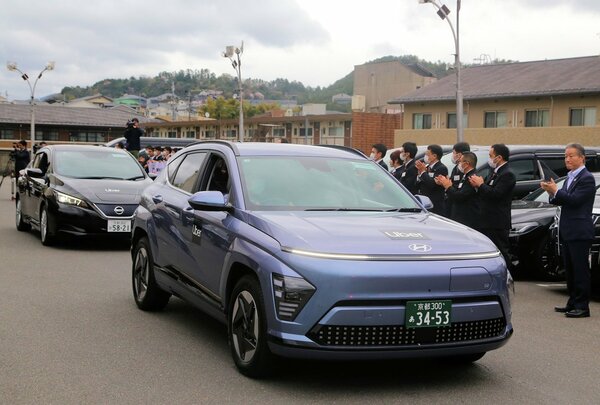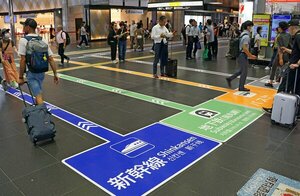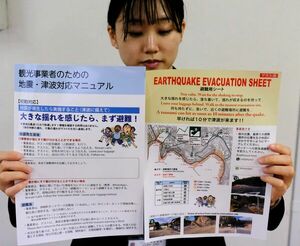The "Japanese version of ride sharing", which allows ordinary drivers to transport passengers by receiving fares, will begin on April 8, 2024, and in Kyoto, taxi major MK (Minami Ward, Kyoto City) will take the lead in entering the market, and Kamigamo A departure ceremony was held at the sales office (Kita Ward, Kyoto City). For the time being, the trains will be manned by MK employees and will only operate on days and times when there is a severe shortage of taxis.

On April 8th, the Kyoto Land Transport Bureau approved MK's operation. On the first day, 17 vehicles were in operation, manned by employees with class 2 licenses. Dispatch and fare payments are made using the Uber Technologies app. After examining the issues, MK will move to operation using regular drivers.
At the departure ceremony, MK Holdings President Nobuaki Aoki said, ''The shortage of taxis has caused inconvenience to users.We don't know if the success of ride sharing will be good for the industry, but we are planning a new transportation system that prioritizes convenience.'' I want to provide that." At 4 p.m., office employees who are not normally on duty set out in idle vehicles and drove around Kyoto until 7 p.m.
The "Kyoto City Area" where ride-sharing services are now available is the entire southern part of Kyoto Prefecture south of Kyoto City (excluding the former Keihoku Town). Operating hours are Mondays, Wednesdays, and Thursdays from 4:00 pm to 7:00 pm, Tuesdays to Fridays from 12:00 am to 4:00 am, and Fridays to Sundays from 4:00 pm to 5:00 am.
◇
Of the 10 areas outside of Tokyo and Kyoto where service began on April 8th, two areas, Yokohama City and Nagoya City, are aiming to start service in April. Other cities such as Sapporo, Sendai, Saitama, Chiba, Osaka, Kobe, Hiroshima, and Fukuoka are expected to be closed from May onwards.
What is the Japanese version of ride sharing?
The system was introduced in April with conditions such as operation being managed by taxi companies in areas and times when there is a shortage of taxis. In principle, rides are dispatched through an app, the departure and arrival locations and fares are determined in advance, and the user pays cashless.






























